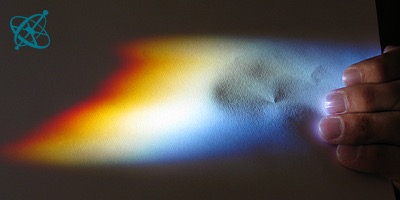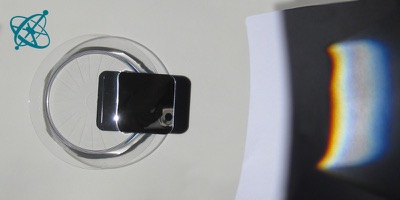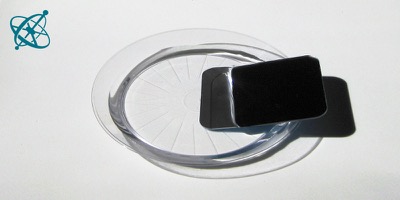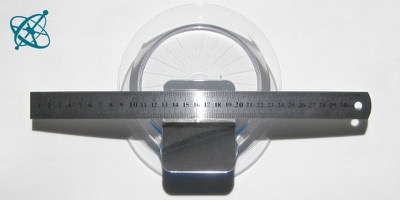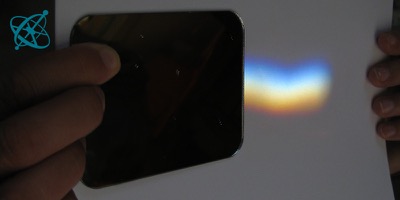 www.sciensation.org | Ciênsação hands-on experiments are published as Open Educational resources under a Creative Commons Attribution-ShareAlike 4.0 International License.
www.sciensation.org | Ciênsação hands-on experiments are published as Open Educational resources under a Creative Commons Attribution-ShareAlike 4.0 International License.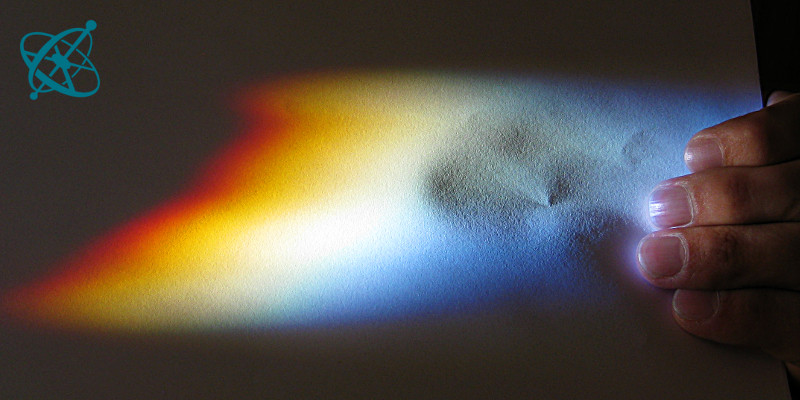
What is white light?
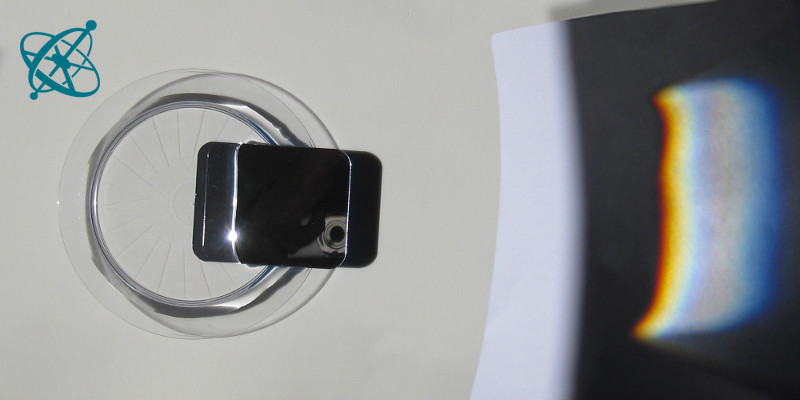
Take it 'apart'…
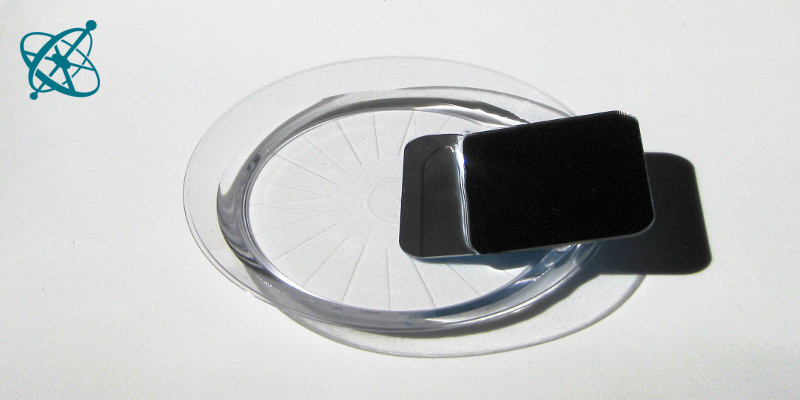
…with a slanting mirror in water.
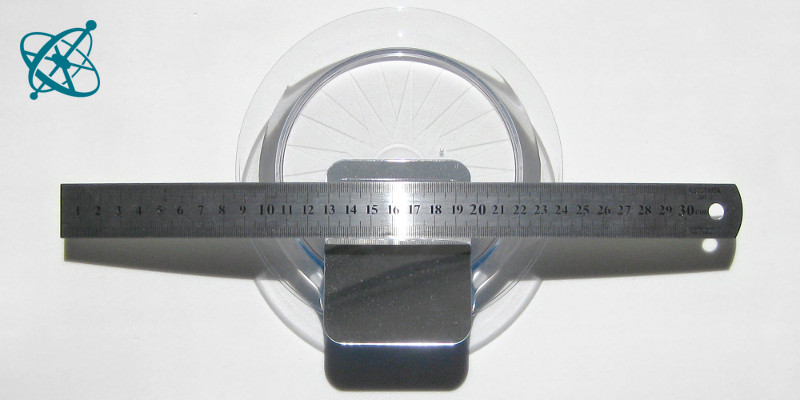
Block some of the light to reflect a small stripe.
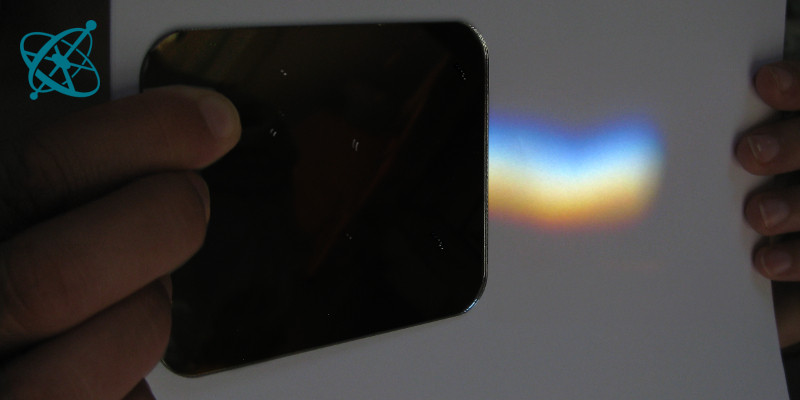
Recombine the light back to white with a second, curved mirror.
The true colors of white
This classic experiment is often used to entertain children with colorful rainbows. However, with almost no extra effort you can follow one of Newton's greatest discoveries: He did not only resolve white light into its spectral colors, but also showed that you can recombine those colors back to white.
White is a mixture of 'all colors' – or more accurately: frequencies – in the visible spectrum.
Place a dish in a spot of direct sunshine and pour some water in it. Then lay a mirror in the water at an angle and look for a rainbow at the ceiling.
1. Try to catch the colored reflection on a white paper at different distances from the mirror: What do you note, and how do you explain this?
2. If you reflect this rainbow on a second, flexible mirror, which you slightly bend to focus the light, what can you observe?
The water wedge above the mirror acts like a prism. At a distance, e.g. the ceiling, you can therefore see a bright stripe in rainbow colors. However, if you catch the reflection nearer to the mirror, where the colors have not yet separated, you see a white stripe with colored boundaries. This experiment allows your students to 'follow' the separation of white light into the spectrum and thereby understand that white light is, in fact, the mixture, or superposition, of all the colors in the spectrum.
Newton managed to prove this by recombining the spectrum back to white with a cylindrical lens. Reflecting the spectrum on a cylindrically curved mirror has the same effect. After a few seconds of practice, your students will be able to focus the rainbow into a white stripe at the ceiling.
